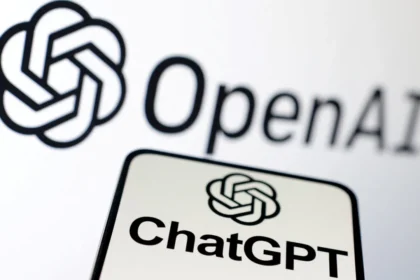The Evolution of Digital Dependency: From Search Engines to Thinking Machines
In the summer of 2008, technology writer Nicholas Carr published what would become one of the most influential essays about the internet’s impact on human cognition. “Is Google Making Us Stupid? What the Internet Is Doing to Our Brains” appeared as a cover story in The Atlantic magazine, raising profound questions about how instant access to information was fundamentally altering the way people learned and processed knowledge.
Carr’s central thesis was both simple and alarming: the internet, particularly search engines like Google, was not merely changing how we access information—it was rewiring our brains themselves. He argued that the constant availability of instant answers was diminishing our capacity for deep, contemplative thinking and potentially making us intellectually lazier. At the core of Carr’s concern was the idea that people no longer needed to remember or learn facts when they could instantly look them up online.
Fast forward to 2025, and Carr’s prescient concerns have taken on new urgency with the emergence of generative artificial intelligence tools like ChatGPT, Claude, and Gemini. While search engines merely retrieved existing information, these AI systems can create, analyze, synthesize, and produce entirely new content. This represents a qualitative leap beyond Carr’s original concerns—we may now be outsourcing not just memory, but the very act of thinking itself.
The New Frontier: When Machines Can Think
The distinction between traditional search engines and generative AI is crucial to understanding the current cognitive landscape. Search engines require users to formulate queries, evaluate results, and synthesize information from multiple sources. This process, while faster than traditional research methods, still engaged critical thinking skills to some degree. Users had to assess the credibility of sources, compare different perspectives, and draw their own conclusions.
Generative AI, by contrast, can perform these cognitive tasks automatically. It can analyze complex problems, synthesize information from vast databases, generate creative solutions, and present polished, coherent responses that appear to demonstrate deep understanding. This capability marks what Professor Aaron French of Kennesaw State University calls “the first technology that can replace both human reasoning and creativity.”
French’s observation highlights a fundamental shift in human-technology interaction. Previous technologies, from the printing press to calculators to search engines, were tools that augmented human capabilities while still requiring human judgment and analysis. Generative AI, however, can perform end-to-end intellectual tasks, potentially eliminating the need for human cognitive engagement altogether.
The Dunning-Kruger Effect in the Age of AI
To understand the risks posed by this new technological landscape, French draws on the Dunning-Kruger effect, a well-documented cognitive bias first described by psychologists David Dunning and Justin Kruger in 1999. The Dunning-Kruger effect is a cognitive bias in which people with limited competence in a particular domain overestimate their abilities, while those in the bottom quartile rated their skills far above average.
The effect is explained by the fact that the metacognitive ability to recognize deficiencies in one’s own knowledge or competence requires that one possess at least a minimum level of the same knowledge or competence. In simpler terms, you need to know enough about a subject to recognize how much you don’t know.
The original research involved testing participants on logic, grammar, and humor, then asking them to assess their own performance. Those who performed poorly consistently overestimated their abilities, with those scoring in the 12th percentile rating themselves as performing above average. Conversely, high performers often underestimate their relative abilities, assuming that tasks easy for them are equally easy for others.
When applied to AI usage, this psychological phenomenon reveals two distinct user categories:
The Over-Reliant Users: Trapped on Mount Stupid
The first group consists of users who treat AI as a substitute for learning rather than a tool for enhancement. These individuals experience what French calls being trapped on the “Peak of Mount Stupid”—a state where AI-generated responses create an illusion of understanding without genuine comprehension.
This phenomenon manifests in several ways:
Surface-Level Knowledge Acquisition: Users may memorize AI-generated explanations without understanding the underlying principles, concepts, or reasoning. They can repeat sophisticated-sounding information but cannot apply it in novel contexts or recognize when the AI’s output is flawed or inappropriate.
Reduced Critical Thinking: When AI provides ready-made analyses and conclusions, users may lose the habit of questioning assumptions, evaluating evidence, or considering alternative perspectives. The convenience of instant, polished answers can atrophy the mental muscles required for independent reasoning.
Metacognitive Impairment: Perhaps most dangerously, heavy reliance on AI can impair users’ ability to assess their own knowledge and skills. They may conflate their ability to prompt AI effectively with genuine expertise in a domain, leading to overconfidence in situations where AI assistance isn’t available or appropriate.
Context Blindness: AI systems, despite their sophistication, lack true understanding of context, cultural nuances, and real-world constraints. Over-reliant users may accept AI-generated solutions without considering whether they’re practical, ethical, or suitable for their specific circumstances.
The Augmenters: Walking the Path of Enlightenment
The second group uses AI as a cognitive partner rather than a replacement. These “Augmenters” follow what the French term the “Path of Enlightenment,” leveraging AI’s capabilities while maintaining and developing their own critical thinking skills.
Effective augmentation strategies include:
Using AI for Ideation and Exploration: Rather than accepting AI’s first response, augmenters use it to generate multiple perspectives, explore different approaches, and identify questions they might not have considered. They treat AI as a brainstorming partner that can help them think more comprehensively about complex problems.
Verification and Cross-Referencing: Sophisticated users understand AI’s limitations and consistently verify important information through multiple sources. They use AI to accelerate research but maintain responsibility for fact-checking and validation.
Skill Development Through AI Interaction: Augmenters use AI to practice and refine their own abilities. For example, they might use AI to generate practice problems, provide feedback on their work, or explain concepts they’re struggling to understand. The goal is to build their own capabilities rather than bypass them.
Meta-Learning: Perhaps most importantly, effective AI users develop better understanding of how to learn and think. They use AI to explore their own cognitive processes, identify knowledge gaps, and develop more effective learning strategies.
The Neuroplasticity Factor: How Technology Rewires the Brain
The concerns raised by both Carr and French aren’t merely theoretical—they’re grounded in our growing understanding of neuroplasticity, the brain’s ability to reorganize itself throughout life. Research in cognitive neuroscience has shown that the technologies we use regularly can literally reshape our neural pathways and cognitive patterns.
Studies have documented how different types of technology use affect brain structure and function. Heavy internet users show changes in areas associated with attention and impulse control. The constant task-switching required by digital multitasking can reduce gray matter density in regions responsible for cognitive and emotional control.
With generative AI, these effects may be even more pronounced. When we consistently outsource complex cognitive tasks to AI systems, we may be training our brains to expect instant, effortless answers rather than engaging in the sustained mental effort required for deep thinking and learning.
The psychological mechanism behind cognitive dependency is primarily explained by meta-ignorance or a lack of self-awareness regarding one’s ignorance. Neuroscience research suggests that metacognitive abilities are linked to the prefrontal cortex, the part of the brain responsible for decision-making and self-reflection. When these functions aren’t regularly exercised, our ability to accurately assess our own knowledge and capabilities may deteriorate.
Workplace and Educational Implications
The divide between over-reliant users and augmenters has significant implications for education and employment. In academic settings, students who rely heavily on AI for assignments without developing a genuine understanding may struggle when faced with exams, real-world applications, or situations requiring independent problem-solving.
In the workplace, employees who use AI as a crutch rather than a tool may find themselves increasingly vulnerable to automation. As French notes, those trapped on the “Peak of Mount Stupid” may be easier to replace, as their primary value-add becomes their ability to interface with AI systems—a skill that may itself become automated.
Conversely, workers who successfully augment their capabilities with AI may become more valuable than ever. They combine human creativity, judgment, and contextual understanding with AI’s computational power and vast knowledge base. This hybrid approach can lead to innovations and solutions that neither humans nor AI could achieve independently.
The Path Forward: Intentional AI Usage
The key insight from French’s analysis is that the determining factor isn’t whether you use AI, but how you use it. Developing a healthy relationship with AI requires intentionality and self-awareness about our cognitive habits and dependencies.
Strategies for Effective AI Augmentation
Maintain First-Principles Thinking: Before consulting AI, spend time thinking through problems independently. Use AI to validate, challenge, or expand your initial ideas rather than replacing your own reasoning process entirely.
Practice Cognitive Exercises: Regularly engage in activities that require sustained mental effort without AI assistance—reading complex texts, solving puzzles, engaging in debates, or working through mathematical problems by hand.
Develop AI Literacy: Understand how AI systems work, their limitations, and their potential biases. This knowledge is crucial for interpreting and contextualizing AI-generated content appropriately.
Embrace Productive Struggle: Resist the urge to immediately turn to AI when faced with challenging problems. The struggle to work through difficult concepts is often where the deepest learning occurs.
Use AI for Metacognitive Development: Leverage AI to better understand your own learning processes. Ask it to explain different problem-solving approaches, help you identify your knowledge gaps, or provide feedback on your reasoning.
The Broader Cultural Challenge
The rise of generative AI poses challenges that extend beyond individual cognitive development to broader cultural and societal questions. If large numbers of people become cognitively dependent on AI systems, what happens to human creativity, innovation, and independent thought?
There’s also the question of equity and access. Those with better education, greater technological literacy, or more resources may be better positioned to use AI as an augmentation tool, while others may fall into patterns of over-dependence. This could exacerbate existing educational and economic inequalities.
Furthermore, as AI systems become more sophisticated, the line between augmentation and replacement may become increasingly blurred. Future AI systems may be so capable that even well-intentioned users find it difficult to maintain their own cognitive skills.
Choosing Our Cognitive Future
Nicholas Carr’s 2008 question about Google making us stupid has evolved into a more complex and urgent inquiry about the role of artificial intelligence in human cognition. The emergence of generative AI represents both an unprecedented opportunity and a significant risk.
As the French emphasize, we stand at a crossroads. One path leads to cognitive decline—a future where we become increasingly dependent on machines for thinking, gradually losing our capacity for independent reasoning, creativity, and learning. The other path leads to cognitive enhancement—a future where AI amplifies human intelligence rather than replacing it, where we become smarter, more creative, and more capable than ever before.
The choice between these futures isn’t determined by the technology itself, but by how we choose to interact with it. By understanding the risks, developing AI literacy, and committing to intentional usage patterns, we can harness the tremendous potential of AI while preserving and enhancing the cognitive capabilities that make us uniquely human.
The question is no longer whether AI will change how we think—it already has. The real question is whether we’ll guide that change in directions that serve human flourishing, or whether we’ll passively allow our most precious cognitive abilities to atrophy in the face of technological convenience. The future of human intelligence may well depend on the choices we make today about how we engage with artificial intelligence.











